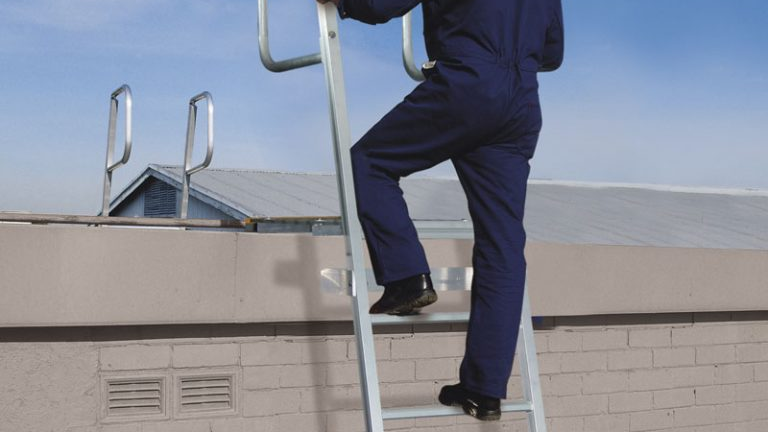If your employees are working on the roof, it’s important that you provide safe Ladders access to the facility. Some roofs may be quite easy to access but others can require a more complicated solution. Challenges arise on the worksite every day and it’s up to you to handle them and keep your staff safe.
The best way to do this is by performing a risk assessment. Walk around the area and identify any potential dangers. In this article, we will look at how to select the correct roof access ladder for the job and how to climb it safely. Read on to find out more.
What to Look for in a Fixed Roof Access Ladder
When employees need to work above the ground and especially at excessive heights, the law requires you to provide a roof access ladder. There should be at least two access points and they should be kept free from obstructions.
The ladder should be inspected for any damage and the rungs tested to make sure they are in working order. Ladder should be able to handle the weight and extend to an appropriate length.
The ladder rungs should have an anti-slip surface for added safety. Very tall ladders should also be fitted with a fall arrest system.
Advantages of Roof Access Ladders
The main advantage of a roof access ladder is to help staff safely access the roof where the work needs to be done. The type and number of ladders you will need, will depend on a few factors:
- The height of the roof
- How many people will be using the ladder
- If there is more than one area you need to access
Ladders should only be used by authorised personnel. When not in use, the ladder should be barricaded or have a locked access gate so it can’t be used without permission. The roof should also be fitted with an edge guardrail for fall protection purposes.
Other advantages include
- Quicker roof access
- Easy to customise to the specific job
- Can be enclosed with a cage and self-closing gates
The Correct Climbing Technique
You may think that climbing a ladder is as easy as putting one foot in front of the other, but it isn’t that simple and a proper climbing technique should be followed. Follow these tips for safe climbing.
- Turn so that you are facing the ladder.
- Grab firmly onto the rungs. This is important because if you slip you have a better chance of saving yourself by grabbing the rungs rather than the rails.
- Always ensure that you have a three-point connection to the ladder at all times. Never have more than one hand or foot off the ladder at any time.
- Ensure that your ladder extends at least three feet above the edge of the roof.
- The top three rungs are out of bounds and should never be stepped on.
- Ensure that you keep your weight below the roofline, and never stand on any rung that is higher than the roofline. This can make the ladder very unstable.
- Stay straight in line with the ladder and avoid reaching over to either side.
- Only make adjustments to the ladder when you are standing on the ground. This includes extending the ladder.
- Only move the ladder from the ground level. Don’t try to move it when you are on the roof as this could increase your risk of falling.
- Avoid powerlines and other potential dangers.
Steps to Access the Roof Safely
Once your ladder has been set up safely and you have followed all the named precautions you may start the climbing process.
- Gather all your supplies – this will limit the number of times you need to climb up and down the ladder.
- Begin climbing and keep three-point contact at all times.
- Secure the one end of the safety rope to a secure part of the roof.
- Next tie the other end of the rope to a structural feature of the house or building. Use a bowline knot that is easy to undo but is still strong.
- Put on your harness and ensure that the D-ring is at the back, in the middle of your shoulders. Place your legs through the leg loops and secure the chest clips.
- The rope should be taut when you climb.
- Secure the hook of the harness onto the safety rope.
- Once you are on the roof, tie a new loop, unclip the harness and connect yourself to another component of the roof safety system.
Top tips: If possible, avoid working on the roof when it rains and avoids doing work alone. Having another set of hands will help the work get done faster and you can help each other if you should slip and fall.
Final Thoughts
Working on the roof might be a daunting task, but it can be accomplished safely if you follow these tips. Safety should always be the top priority for yourself and for your employees.





